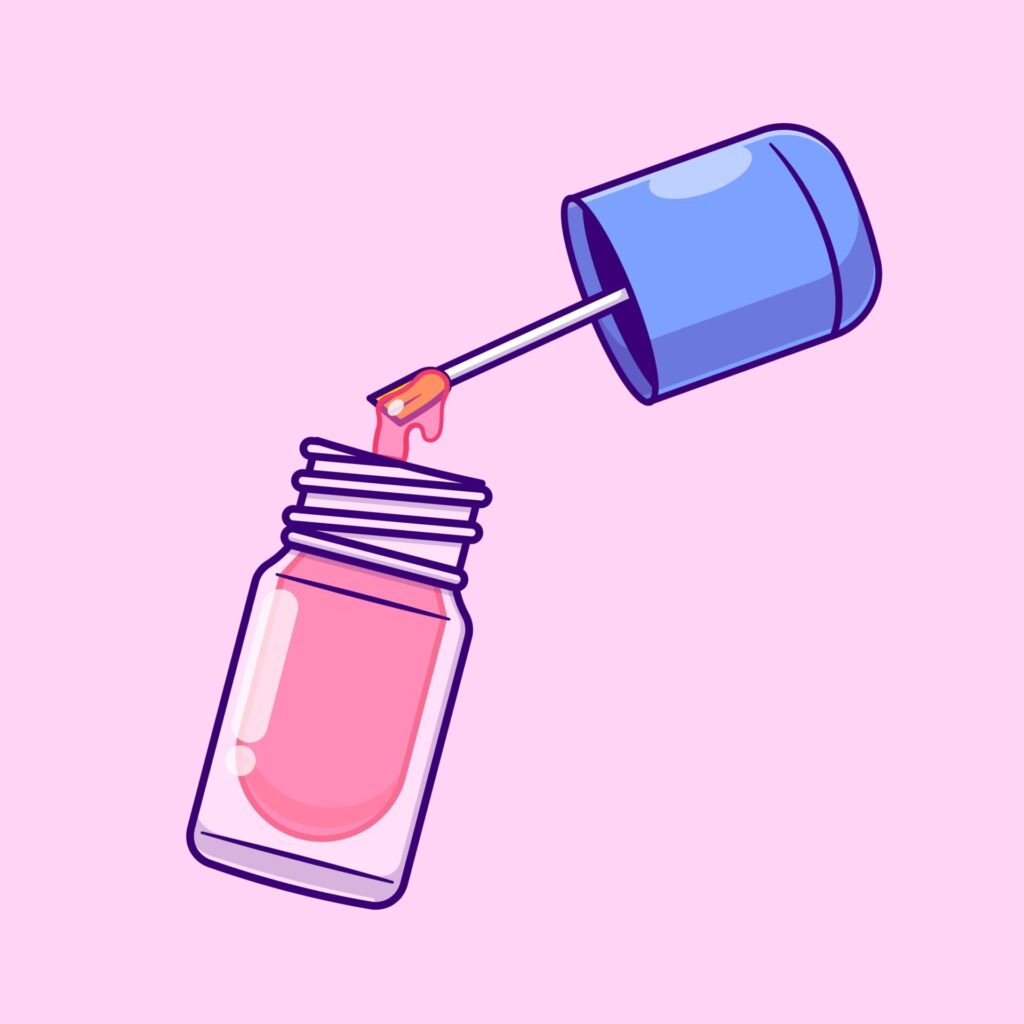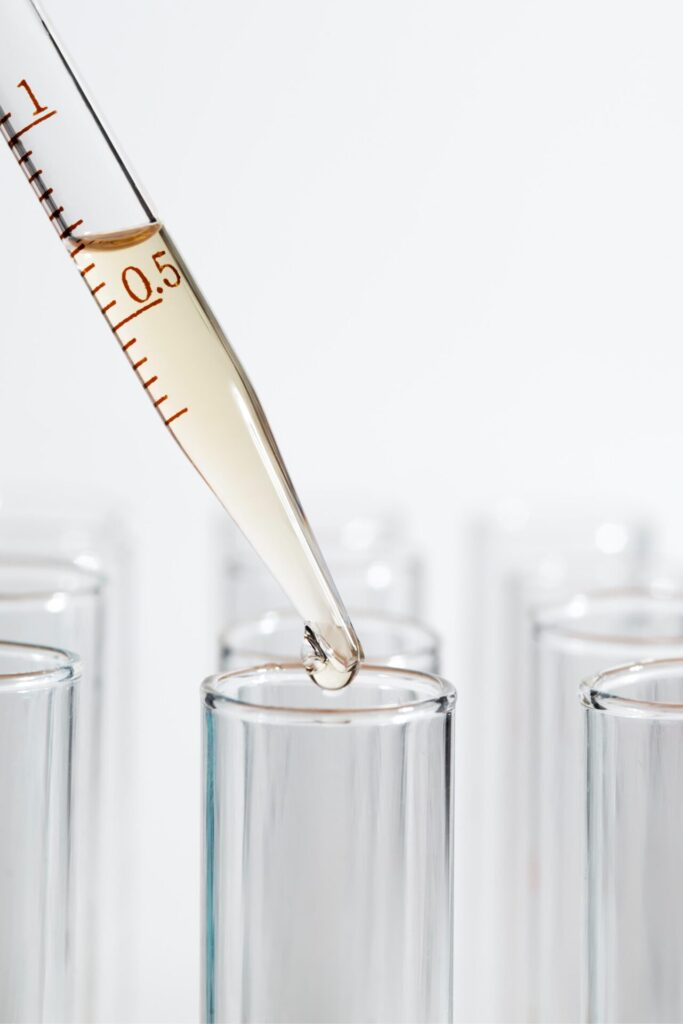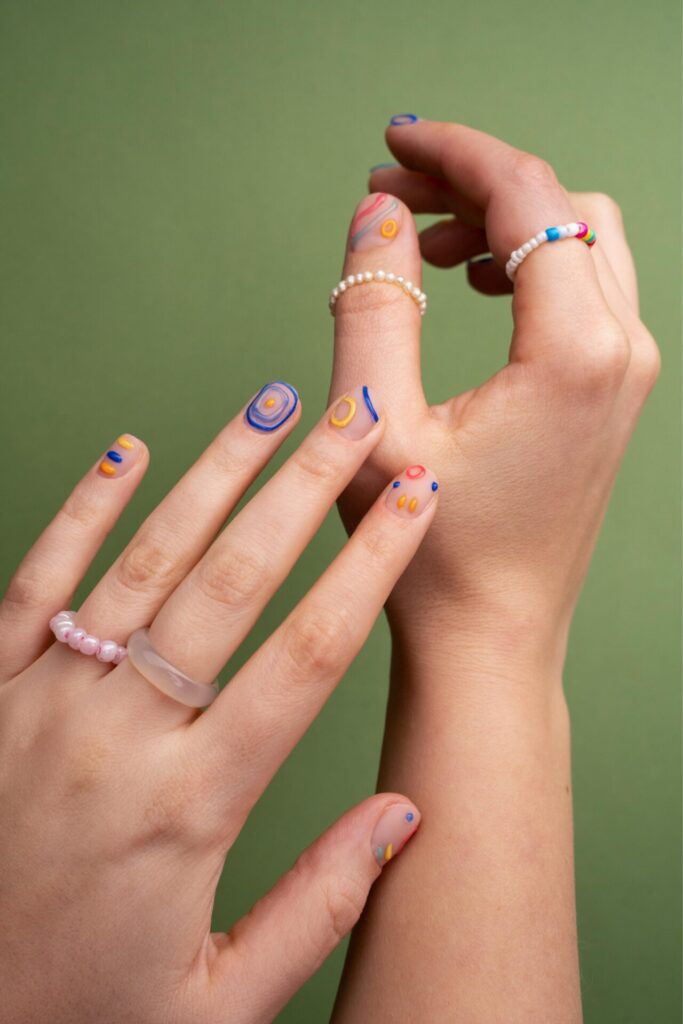Do nail polish stickers have formaldehyde? This question is becoming increasingly relevant as more people opt for these convenient, mess-free manicure solutions.
Nail polish stickers offer style and practicality, but their chemical composition remains a topic of concern.
While they are marketed as a safer alternative to traditional nail polish, it is crucial to understand what goes into their production.
With rising awareness of harmful chemicals in cosmetics, diving deeper into whether nail polish stickers contain formaldehyde or any potentially hazardous substances helps consumers make informed, safer beauty choices without sacrificing style or convenience.

What Are Nail Polish Stickers?
Nail polish stickers are a modern alternative to traditional liquid nail polish. These thin adhesive strips mimic the appearance of a perfectly polished manicure but are much easier to apply.
Made with flexible materials, they come in various designs, colors, and finishes, catering to every aesthetic preference.
Their convenience and mess-free application make them a go-to option for people who want salon-quality nails without the time commitment or cost.
But what exactly are they made of? Understanding their composition, including the potential presence of chemicals like formaldehyde, is essential for making informed choices about their safety.
The Rise in Popularity of Nail Polish Stickers
From busy professionals to beauty enthusiasts, nail polish stickers have taken the cosmetic world by storm. Their appeal lies in their simplicity: no drying time, no streaks, and no smudges.
Social media influencers often showcase stunning designs, further boosting their popularity. Plus, brands market them as safer and more eco-friendly compared to traditional polishes.
However, questions about their ingredients especially the presence of potentially harmful chemicals like formaldehyde linger among users.
While nail polish stickers offer convenience and style, understanding their composition and ensuring their safety is crucial for those looking to balance beauty with health considerations.
Understanding Formaldehyde
it’s important to first understand formaldehyde itself. A common ingredient in various industries, formaldehyde is used in cosmetics as a preservative and hardening agent.
While it has practical benefits, its health risks have made it a controversial topic in beauty products.
Learning about formaldehyde’s properties, uses, and potential dangers provides a foundation for exploring its presence in nail polish stickers and whether these products align with modern safety standards for personal care.

What Is Formaldehyde?
Formaldehyde is a colorless gas widely used in manufacturing, particularly in preservatives and adhesives.
It’s found in products like furniture, household cleaners, and even cosmetics. In nail care, formaldehyde often serves as a hardening agent, helping to strengthen brittle nails.
While it may sound helpful, its use in beauty products has sparked debates due to its potential health risks, such as skin irritation and respiratory issues.
Understanding formaldehyde’s role in products like nail polish stickers can clarify whether it’s a friend or foe to your beauty routine.
Common Uses of Formaldehyde in Cosmetics
In the cosmetic industry, formaldehyde is used primarily for its preservative properties, extending product shelf life and preventing bacterial growth.
Nail hardeners and hair straightening treatments are among the most common offenders. However, some products use formaldehyde-releasing agents instead, which release small amounts over time.
While these agents are considered less harmful, they’re not without controversy. Recognizing where formaldehyde might appear in your beauty products is the first step to making safer choices.
Health Concerns Linked to Formaldehyde
Formaldehyde has been linked to several health issues, including skin allergies, respiratory problems, and, in extreme cases, cancer.
The International Agency for Research on Cancer (IARC) has classified it as a human carcinogen, adding to the alarm around its presence in consumer products.
Even at low levels, exposure can cause irritation, making it a concern for those with sensitive skin or allergies.
This makes it crucial to understand whether products like nail polish stickers include this controversial ingredient.

Composition of Nail Polish Stickers
Their growing popularity suggests they are a safer, more efficient alternative to traditional nail polish, but the answer lies in their composition.
Nail polish stickers are made from adhesives, pigments, and coatings designed to mimic the look of polished nails.
However, certain chemicals may be included to enhance durability and flexibility, raising questions about their safety.
Exploring the ingredients in these products sheds light on whether they truly are non-toxic or if hidden risks, like formaldehyde, could still be a concern.
Ingredients Typically Found in Nail Polish Stickers
Nail polish stickers are often made with a mix of adhesive materials, pigments, and protective coatings.
Unlike liquid polish, they are solid strips that don’t require drying. However, they can include chemicals to ensure flexibility and durability, like plasticizers and solvents.
Some may also contain adhesive agents that help them stick securely to nails.
While many brands market their stickers as non-toxic, it’s essential to scrutinize their ingredient lists for potentially harmful components like formaldehyde or its derivatives.
For more insight into nail health, if you’ve noticed your nails becoming see-through, you can read more in Why Are My Nails See-Through?.
Comparison with Traditional Nail Polish
While nail polish stickers eliminate the need for drying and reduce exposure to fumes, their composition can still be a concern.
Traditional nail polish often includes formaldehyde, toluene, and dibutyl phthalate (DBP)—known as the “toxic trio.” Stickers might bypass some of these but could contain similar chemicals in different forms.
They’re marketed as an innovative alternative, but the question remains: are they genuinely safer, or is it just clever branding? Understanding these differences helps weigh the pros and cons.
Formaldehyde in Nail Products
Formaldehyde has long been used in nail care for its ability to strengthen nails and preserve formulas. However, its health risks have led to stricter regulations and the rise of “formaldehyde-free” claims.
Understanding formaldehyde’s role in nail products reveals why it has been used historically and whether modern innovations, like nail polish stickers, have successfully eliminated it from their formulations.
Exploring these aspects helps consumers make informed decisions about the safety and effectiveness of their nail care choices.
Why Formaldehyde May Be Used in Nail Products
Formaldehyde’s role in nail care is primarily functional. It strengthens nails by cross-linking proteins, making them harder and less prone to breakage.
This is why it’s often found in nail hardeners or certain types of adhesives. However, its use has raised eyebrows due to its classification as a potential health hazard.
With growing consumer awareness, many brands have sought alternatives, but traces of formaldehyde can still lurk in products like nail polish stickers.
Historical Use of Formaldehyde in Nail Polishes
In the past, formaldehyde was a staple ingredient in nail products, lauded for its strengthening properties.
However, mounting evidence about its risks led to stricter regulations in many countries. The rise of “3-free” and “5-free” polishes—indicating the absence of formaldehyde and other harmful chemicals—marked a shift in the industry.
Despite these advances, concerns persist about whether newer products, like nail polish stickers, have truly eliminated this ingredient.
Regulatory Guidelines and Restrictions
Many governments and health organizations have established limits on formaldehyde levels in cosmetics.
For instance, the European Union strictly regulates its use, and products containing it must carry clear warnings. In the U.S., the FDA monitors its presence but doesn’t outright ban it in nail products.
These regulations aim to minimize risks, but they don’t entirely eliminate the possibility of exposure, especially in products with indirect formaldehyde sources.

Analyzing Nail Polish Stickers
While marketed as safe and user-friendly, these products may still contain formaldehyde or its derivatives, depending on the brand and production process.
Investigating the presence of formaldehyde in nail polish stickers through ingredient breakdowns, brand analysis, and transparency efforts reveals important insights.
Understanding what’s in these stickers helps beauty enthusiasts make more informed choices about their nail care routines, balancing convenience with safety.
Do Nail Polish Stickers Contain Formaldehyde?
The answer isn’t always straightforward. Many nail polish stickers are marketed as “non-toxic” or “free of harmful chemicals,” but this doesn’t guarantee the absence of formaldehyde or its derivatives.
Some stickers may contain formaldehyde-releasing agents, which release small amounts over time to help the product maintain its durability and adhesion.
The only way to know for sure is by checking the ingredient list or opting for stickers from brands that explicitly claim to be formaldehyde-free.
Brands Known for Formaldehyde-Free Stickers
Several brands have taken the initiative to create safer, formaldehyde-free nail polish stickers. Companies like Dashing Diva, Color Street, and Incoco highlight their use of non-toxic ingredients, making them popular among health-conscious consumers.
However, it’s important to note that not all brands provide full transparency about their formulations. Researching brand reputation and reading customer reviews can help you choose safer options.
Case Studies: Ingredient Analysis of Popular Brands
An analysis of some leading nail polish sticker brands reveals a mixed picture. While some adhere to strict clean beauty standards, others include chemicals that may raise eyebrows.
For instance, certain budget-friendly brands may compromise on safety to keep costs low. Ingredient transparency varies widely, and a detailed examination of product labels or third-party testing can provide critical insights into whether formaldehyde or its derivatives are present.
Potential Risks and Misconceptions
Do nail polish stickers have formaldehyde, and are consumers aware of the potential risks? Misleading labels and vague ingredient lists often create confusion about product safety.
Many people assume “formaldehyde-free” means a product is entirely safe, but resins and derivatives can still cause reactions.
Clarifying common misconceptions about formaldehyde and highlighting associated risks, such as allergies or irritation, can help consumers make more informed decisions and recognize red flags when choosing nail products.
For more on nail care and how to keep your nails healthy, check out our article on Does Nail Varnish Damage Nails? Tips for Keeping Your Nails Healthy and Strong.
Formaldehyde Resins: Are They the Same as Formaldehyde?
Formaldehyde resins, commonly used in nail products, are often confused with formaldehyde itself.
These resins are polymers that may release trace amounts of formaldehyde, particularly when exposed to heat or wear.
While they’re considered less harmful, they can still cause allergic reactions or irritation in sensitive individuals.
Understanding this distinction helps clarify why some “formaldehyde-free” labels may not be as clear-cut as they seem.
Misleading Labels: What “Formaldehyde-Free” Really Means
“Formaldehyde-free” doesn’t always mean entirely free of all related chemicals. Some products may avoid pure formaldehyde but still include formaldehyde-releasing agents or other potentially harmful substitutes.
This type of labeling is often a marketing tactic aimed at health-conscious buyers. It’s essential to look beyond the buzzwords and investigate what “free” truly entails for the product in question.
Allergic Reactions and Skin Sensitivity
Even small traces of formaldehyde or its derivatives can trigger reactions in sensitive individuals. Symptoms may include redness, itching, or even blistering around the nails.
Over time, repeated exposure can worsen sensitivity, making it crucial to choose products carefully.
If you have a history of allergies or skin conditions, consulting a dermatologist before using nail products is a wise precaution.

Safer Alternatives and Tips
Thankfully, beauty brands are responding to the demand for non-toxic products, offering formaldehyde-free options for health-conscious consumers.
Identifying these alternatives involves looking for certifications, carefully reading ingredient labels, and selecting hypoallergenic options for sensitive skin.
By focusing on these steps, consumers can find nail polish stickers that prioritize both style and safety, allowing them to enjoy beautiful nails while making healthier beauty choices.
How to Identify Formaldehyde-Free Products

Reading labels is your first line of defense. Look for certifications such as “5-free,” “7-free,” or “10-free,” which indicate the absence of formaldehyde, toluene, and other harmful chemicals.
Apps like Think Dirty or EWG Skin Deep can help you scan products for toxic ingredients. Additionally, choose brands that provide full ingredient transparency and avoid ambiguous terms like “fragrance,” which may hide harmful chemicals.
Certifications and Labels to Look For
Certifications such as Leaping Bunny, ECOCERT, or Clean at Sephora can be reliable indicators of safer, eco-friendly products.
These labels often signify rigorous testing and compliance with strict safety standards.
While these certifications aren’t specific to nail polish stickers, they can be a good starting point when exploring clean beauty options.
Recommendations for Sensitive Skin
If you have sensitive skin, opt for hypoallergenic nail polish stickers explicitly designed for minimal irritation.
Brands that specialize in natural or plant-based formulations are often a safer choice.
Applying a protective base coat before using nail polish stickers can also reduce the risk of direct contact with potentially irritating chemicals.
Environmental Impact

Beyond personal health, it’s important to consider the environmental impact of nail care products. Formaldehyde and similar chemicals can contribute to pollution when improperly disposed of.
Nail polish stickers, especially those containing harmful substances, can affect the environment by releasing chemicals into water and soil.
Exploring these environmental concerns highlights the need for eco-friendly alternatives that minimize chemical waste.
Sustainable, non-toxic nail products are a growing trend, offering consumers the chance to make more responsible choices that benefit both their health and the planet.
Formaldehyde in Cosmetic Waste
Formaldehyde doesn’t just pose risks to human health it can also harm the environment. When disposed of improperly, products containing formaldehyde can leach into soil and water, contributing to pollution.
Nail polish stickers, while small, can add up over time, especially if they include chemical residues.
Understanding the environmental impact of beauty products is essential for making more sustainable choices.
Eco-Friendly Alternatives for Nail Art
Fortunately, eco-conscious brands are stepping up to offer biodegradable or recyclable nail polish stickers.
Some companies are even exploring innovative materials made from plant-based adhesives and natural pigments.
Choosing these alternatives not only minimizes your exposure to harmful chemicals but also reduces your environmental footprint.
Expert Opinions and Consumer Awareness

Dermatologists and chemists emphasize the importance of ingredient awareness when it comes to nail products.
They highlight the potential risks associated with formaldehyde exposure, such as skin irritation and allergic reactions, and advocate for greater transparency in product labeling.
Insights from professionals, along with consumer surveys, reveal gaps in knowledge about formaldehyde in beauty products.
This helps paint a clearer picture of whether nail polish stickers are as safe as they appear and underscores the need for consumers to be more diligent in understanding what’s in the products they use.
Insights from Dermatologists and Chemists
Experts often stress the importance of reading product labels and understanding ingredient lists.
Dermatologists recommend avoiding products with formaldehyde, especially for individuals with sensitive skin or existing nail conditions.
Chemists highlight the distinction between formaldehyde and its derivatives, emphasizing that even trace amounts can accumulate over time.
Staying informed is key to making safer beauty choices.
Survey Results: Consumer Knowledge About Formaldehyde
Surveys show that while many consumers know formaldehyde’s risks, fewer understand its prevalence in nail products.
Misleading labels and lack of transparency from brands contribute to this gap.
Increased education about ingredient safety and clear labeling practices could empower consumers to make better-informed decisions.

Conclusion
Should You Be Concerned About Formaldehyde in Nail Polish Stickers?
The potential risks of formaldehyde in nail polish stickers depend on their formulation.
While many brands claim to be safe, ingredient scrutiny is essential to ensure they meet your health and safety standards.
Opting for reputable, certified brands and staying informed about chemical risks can help you enjoy beautiful nails without compromising your well-being.
Future Trends in Non-Toxic Nail Products
As consumer demand for safer products grows, the nail care industry is shifting towards non-toxic, eco-friendly solutions.
Innovations in formulations and materials promise a future where nail polish stickers and similar products can be entirely free of harmful chemicals, giving beauty enthusiasts peace of mind.



